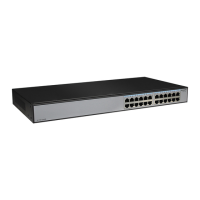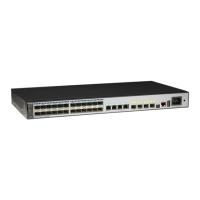4.1 OSPF Overview
OSPF is a link-state IGP. At present, OSPFv2 is intended for IPv4.
Defined by the Internet Engineering Task Force (IETF), the Open Shortest Path First (OSPF)
protocol is an Interior Gateway Protocol (IGP) implemented on the basis of the link status.
NOTE
In this chapter, OSPF refers to OSPFv2, unless otherwise specified.
OSPF Features
OSPF has the following features:
l Wide applications
OSPF is applicable to networks of various sizes and even to the network consisting of
hundreds of routers.
l Fast convergence
Once the network topology changes, Update packets are transmitted to synchronize the link
state databases (LSDBs) of all the routers within the Autonomous System (AS).
l Loop-free
According to the collected link status, OSPF calculates routes with the shortest path tree
algorithm. This algorithm ensures the generation of loop-free routes.
l Area division
An AS can be divided into different areas to facilitate AS management. After the area
partition, an LSDB stores routing information only of the local area. The reduce of LSDB
size dramatically reduces memory and CPU usage. In addition, less bandwidth is consumed
because of the decrease in routing information transmitted within the AS.
l Equal-cost routes
OSPF supports multiple equal-cost routes to the same destination.
l Routing hierarchy
Four types of routing are available. They are listed in the descending order of priority: intra-
area routes, inter-area routes, Type 1 external routes, and Type 2 external routes.
l Authentication
Area-based and interface-based packet authentication guarantees the security of packet
interaction.
l Multicast
Multicast packets are transmitted only on certain types of links to reduce the interference
for some devices.
Process of OSPF Route Calculation
The process of calculating OSPF routes is as follows:
1. Based on the surrounding network topology, each OSPF device originates a Link State
Advertisement (LSA). The switch then transmits Update packets containing the LSAs to
other OSPF devices.
S6700 Series Ethernet Switches
Configuration Guide - IP Routing 4 OSPF Configuration
Issue 01 (2012-03-15) Huawei Proprietary and Confidential
Copyright © Huawei Technologies Co., Ltd.
84

